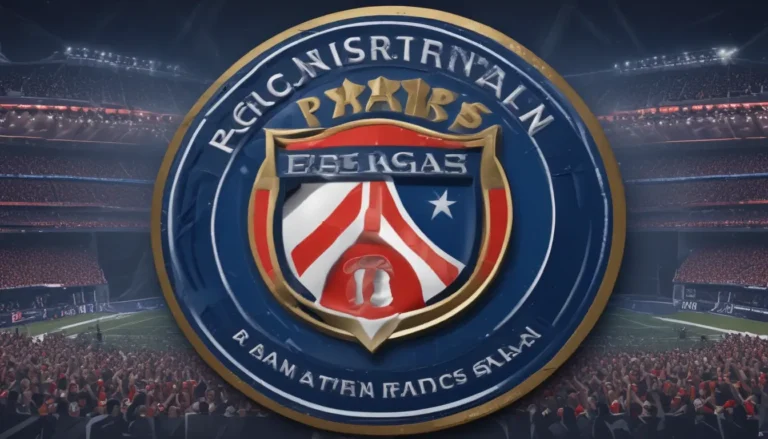A Note About Images: The images used in our articles are for illustration purposes only and may not exactly match the content. They are meant to engage readers, but the text should be relied upon for accurate information.
Are you curious about the captivating world of coding? Whether you’re an experienced developer, a tech enthusiast, or simply intrigued by the backbone of the digital age, this article is your gateway to discovering the mesmerizing realm of coding. From the historical origins of programming languages to the profound impact of coding on our daily lives, each fact will unveil a new layer of insight into this dynamic field. Get ready to explore the evolution of coding, the power of algorithms, and the endless possibilities that arise from lines of code. Join us on a journey that will illuminate the past, present, and future of coding, revealing hidden gems and exciting revelations that make this domain so enthralling. So, buckle up and prepare to be amazed by the wonders of coding that shape the digital landscape we navigate every day.
Key Takeaways:
- JavaScript, born in just 10 days, has emerged as a leading programming language for web development, enabling interactive experiences online.
- The history of computer science is rife with intriguing moments, from the first computer bug being an actual insect to the quirky naming inspiration behind Python. These facts spotlight the remarkable advancements in coding and computing.
The Birth of JavaScript:
JavaScript, the cornerstone of dynamic web experiences, was brought to life in a mere 10 days by Brendan Eich in 1995. Despite its swift inception, JavaScript has skyrocketed to become one of the most utilized programming languages for web development, revolutionizing interactive user interfaces online.
Python’s Humorous Inspiration:
Guido van Rossum, the brilliant mind behind Python, drew inspiration from the British comedy group Monty Python for the name of the language. This light-hearted naming choice reflects Python’s reputation for simplicity and playfulness in the world of programming.
The Origin of Computer Bugs:
In a peculiar turn of events in 1947, the term “bug” entered the realm of computing when a moth caused a malfunction in Harvard’s Mark II computer. This incident not only sparked the term “debugging” but also underscored the unpredictable nature of technology.
HTML’s Unforeseen Purpose:
Tim Berners-Lee’s creation of HTML, initially intended for sharing physics research documents, laid the foundation for the ubiquitous language we now associate with web development. From humble beginnings in academia, HTML has evolved to become the standard tool for crafting web pages and applications.
Pioneering Cybersecurity:
The 1980s witnessed the birth of the first computer virus, developed by Fred Cohen as part of his research endeavors. This event marked a pivotal moment in cybersecurity history, prompting the rise of antivirus software and heightened awareness of digital threats.
Unveiling the Mystique of Coding:
The term “debugging,” widely used in programming circles today, finds its origin in the removal of a literal bug—a moth—from the Harvard Mark II computer. This quirky incident encapsulates the whimsical nature of technological evolution and problem-solving in the world of coding.
Fortran’s Revolutionary Impact:
Unveiled in the 1950s, Fortran (short for “Formula Translation”) forever altered the landscape of software development by introducing the first high-level programming language. This groundbreaking innovation empowered programmers to craft code using English-like commands, paving the way for future advancements in the field.
Revolutionizing Information Access:
Tim Berners-Lee’s visionary proposal of the World Wide Web in 1989 at CERN heralded a new era of global information exchange. This seminal concept laid the groundwork for the modern internet, reshaping how we access and disseminate knowledge on a global scale.
Inspirational Innovations:
The first computer mouse, crafted from wood by Douglas Engelbart in 1964, marked a revolutionary leap in human-computer interaction. Over time, this pioneering input device has evolved into various forms, becoming an indispensable tool for navigating digital interfaces.
Quirky Origins of Terminology:
The term “spam,” now synonymous with unwanted digital communication, traces its roots back to a whimsical Monty Python sketch featuring the word repeated excessively. This unexpected association catapulted “spam” into the lexicon of digital communication jargon.
Honoring Ada Lovelace’s Legacy:
Ada Lovelace, a trailblazing English mathematician, stands as a beacon in the history of computing as the world’s first computer programmer. Her groundbreaking work alongside Charles Babbage laid the foundation for the coding practices we follow today.
Gaming’s Early Evolution:
In 1961, Steve Russell and his team at MIT introduced Spacewar!, the inaugural digital computer game, marking the nascent stages of the video game industry. This pioneering creation laid the groundwork for the immersive gaming experiences we enjoy today.
Pioneering Computing Technology:
John Atanasoff and Clifford Berry’s Atanasoff-Berry Computer, the first electronic digital computer developed in the late 1930s and early 1940s, heralded a new era in computing technology. This groundbreaking innovation set the stage for modern computing as we know it.
Embracing the Digital Era:
The registration of symbolics.com as the first domain name on the internet in 1985 marked a pivotal moment in the evolution of the web. This milestone cemented the importance of domain naming systems in facilitating online interactions and communication.
Cloud Computing’s Inception:
The concept of cloud computing, envisioned as an “intergalactic computer network” by J.C.R. Licklider in the 1960s, laid the groundwork for the seamless cloud-based services we rely on today. This visionary concept revolutionized the way data is stored and accessed in the digital age.
Advancing Computing Capabilities:
In a monumental feat of technological prowess, IBM’s Deep Blue computer outwitted Garry Kasparov, the reigning world chess champion, in 1997. This historic achievement showcased the potential of artificial intelligence and marked a milestone in the fusion of computing and strategic thinking.
Transistor Revolution:
The UNIVAC 1101, introduced in 1952, marked a significant technological leap by employing transistors instead of vacuum tubes in computing systems. This shift not only enhanced performance but also laid the groundwork for future advancements in computer design and reliability.
Coding with a Visual Interface:
The Xerox Alto, introduced in 1973, ushered in a new era of computing with its graphical user interface featuring windows, icons, and a mouse. This innovative design set the stage for modern personal computers, revolutionizing how users interact with technology.
From Vacuum Tubes to Transistors:
The Manchester Baby, also known as the Small-Scale Experimental Machine, made history in 1948 as the first computer to run a stored program. This milestone shifted the paradigm in computing, paving the way for future innovations and advancements in digital technology.
Data Storage Innovation:
The introduction of the IBM 350 in 1956 revolutionized data storage with the first commercial computer hard disk drive. This pivotal advancement offered unprecedented data capacity compared to existing storage methods, fueling the exponential growth of digital information storage.
Conclusion: Unlocking the Mysteries of Coding
In conclusion, these 20 captivating code facts offer a glimpse into the intricate tapestry of technology and programming. From the ingenious minds behind the first programming language to the game-changing innovations in computing, the world of coding is brimming with fascinating details and transformative advancements. By delving into the significance of open-source projects and the evolution of programming languages, we gain a deeper appreciation for the art of coding and its profound impact on modern society.
FAQs
What are some intriguing facts about coding?
Coding, the backbone of modern innovation, is steeped in captivating facts and anecdotes. For instance, the inaugural computer program was crafted by Ada Lovelace in the 19th century, while the term “bug” originated from an actual insect causing a computer malfunction.
Why is it important to know these code facts?
Understanding these code facts provides valuable insights into the rich history, importance, and influence of coding. By acquainting oneself with these pivotal moments, individuals can grasp the evolution of technology, acknowledge the contributions of visionary programmers, and marvel at the perpetual innovation within the coding community.
Embark on a Journey of Discovery:
As you navigate the intricate world of coding, let these captivating facts serve as beacons of inspiration and knowledge. Explore the depths of CodeQL’s transformative analysis, unravel the enigmatic realm of prophecy codes, and uncover the secrets held by Tabnine, the AI-powered coding assistant. Embark on these thrilling journeys to expand your coding horizons and unlock new realms of endless possibilities.
Was this page helpful?
At the core of our mission lies a dedication to delivering trustworthy and engaging content that educates and inspires. Each fact shared on our platform is contributed by real users like you, ensuring a diverse tapestry of insights and information. With meticulous editorial oversight, we guarantee the accuracy and reliability of every submission, ensuring that the facts we offer are not only captivating but also credible. Trust in our commitment to excellence and authenticity as you immerse yourself in the realms of exploration and learning with us.






